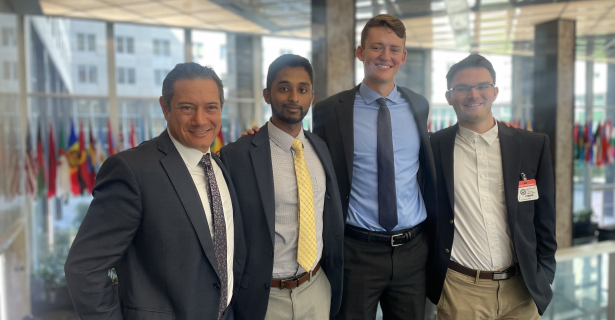This summer I have the privilege to work with Daniel Stoian, a career Foreign Service Officer, Deputy Secretary of State, and current fellow with the Negotiation Task Force at the Davis Center for Russian and Eurasian Studies at Harvard. Having been raised in Silicon Valley and starting his career as an entrepreneur, Danny has a unique background as an FSO and even from my initial conversations with him, his honesty and transparency about the world of government and politics were refreshing.
I am part of Danny’s Negotiations Team, and have been working on multiple projects so far, mainly in the goal of developing effective curricular content for topics that could be useful for rising leaders and incoming diplomats. The primary goal has been expanding a previously one-hour Introduction to Negotiations Presentation into a six-hour seminar. Developing content for this has been both interesting and challenging, as I often felt that I lacked the proper experience to teach someone else about how to negotiate if I had never been a part of one.
However, Danny has opened my eyes to how applicable negotiations were to daily life—every friendship, every conversation, every interaction, is a small negotiation, and each of us have built tools and strategies for how to approach these. A book that we have used heavily to structure the seminar is Getting to Yes: Negotiating Agreement Without Giving In, by Roger Fisher, William Ury, and Bruce Patton, which breaks successful negotiating into four parts: Separate the People from the Problem; Focus on Interests, Not Positions; Invent Options for Mutual Gain; Insist on Using Objective Criteria. We’ve developed simulations that can demonstrate the importance of these strategies, from small arguments over whether a window should be open or closed to geopolitical conflicts such as the war in Ukraine. Each day, I learn and become more invigorated by the topic of negotiations, and I look forward to continuing the summer projects.

